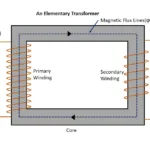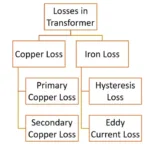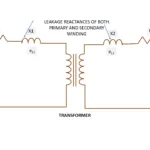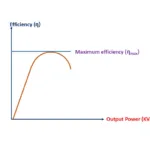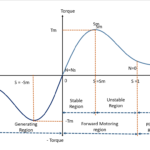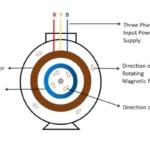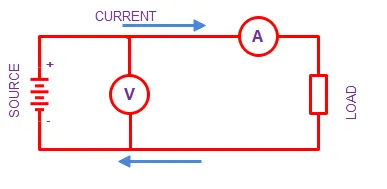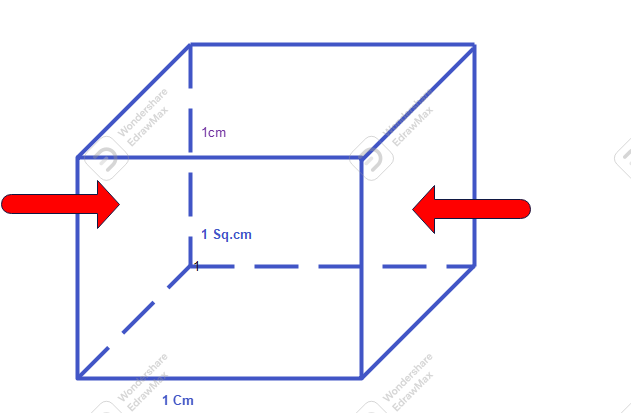Transformer Transforms energy from one circuit to another circuit without electrical coupling , in principle of electromagnetic induction. The energy needs to transformed and energy in form of transformation has to obey few relations with ratios of the transformer. These ratios are often called as transformation ratio of transformer. There are three types of ratios are involved in the transformer as listed below,
- Voltage ratio
- Current ratio
- Turns ratio
Circuit Diagram for transformation ratio of transformer
An Elementary transformer connected with an alternating supply source and voltmeters V1 and V2 are connected across primary and secondary winding of the transformer, A load also has been connected across secondary winding of transformer. Ammeters A1, A2 are connected in series with both primary and secondary winding.
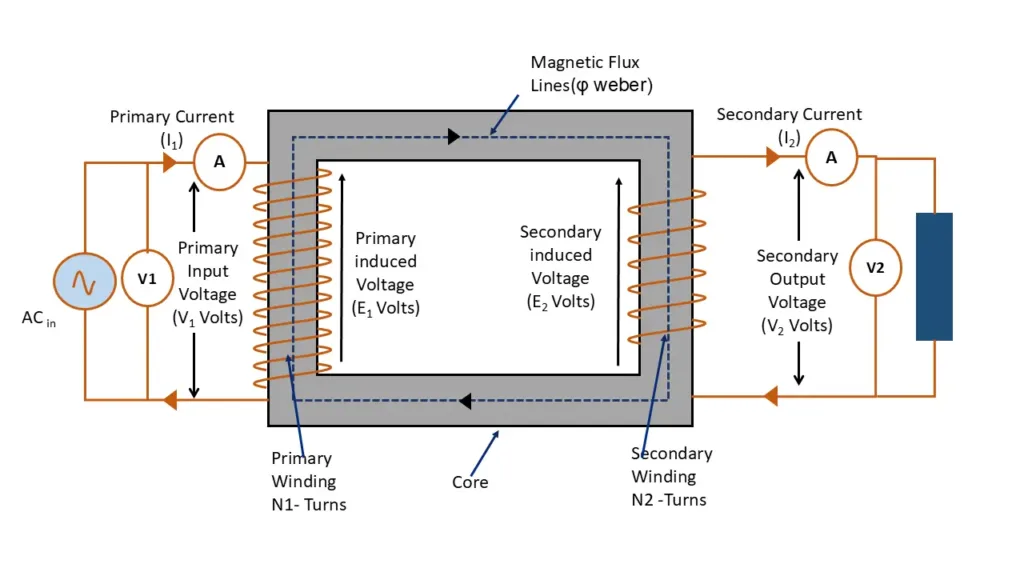
1. Voltage ratio of Transformer
1.1 Under full load condition
The voltage ratio of transformer defined as ratio of induced voltage between primary and secondary winding.

Let Emf induced in primary winding said as
E1 = 4.44ΦmfN1 volts ——–(1)
And Emf induced in secondary winding
E2 = 4.44ΦmfN2 volts ——–(2)
Where,
E1 – Emf induced in primary winding
E2 – Emf induced in secondary winding
N1 – Number of turns in primary winding
N2 – Numbers of turns in secondary winding
Then, taking ratio of equation (1) and (2) and simplifying it, we get,

K shows transformation ratio constant
1.2 Under No load condition.
Under No load condition there is no flow of electric current (I2) through secondary winding. So, there is no losses copper losses in secondary winding of transformer. So emf induced in secondary winding will be equal to terminal voltage available on terminal of secondary side.
E2 = V2 ——–(5)
Due to no load at secondary side , magnitude of primary current (I1) also will be quite low to compensate fixed losses (core loss, iron loss) of transformer. So, it may also be considered as
E1 = V1 ——–(6)
Equation (6) and (7) can be re-written as

Substitute equation (3) , transformation ratio of no-load transformer in equation (7), we get

Equation (8) indicated voltage ratio of transformer under load condition proportional to voltage ratio under no load condition.
2. Turns ratio of transformer
The turns ratio of the transformer defined as ratio of number of primary turns (N1) and number of secondary turns (N2) in the transformer

With Co-relation of equation (8) and (9) clearly indicates that voltage ratio ultimately depends on turns ratio of transformer. So, number of turns in primary and secondary winding decides magnitude of induced voltage in secondary winding to applied voltage / induced voltage in primary side.
3. Current ratio of transformer
We know that transformer transforms energy from one side to another side of electrical circuit without electrical coupling. As transformer is a static device there is no losses related to mechanical losses are produced like induction motors.
By negligible losses in transformer , let assume efficiency as 100% approximately.
I.e.,
Input power given = Power delivered to load
Pin = Pout
V1I1CosΦ1 = V2I2CosΦ2 ——–(10)
During energy transformation , power factor of input power supply (CosΦ1) and power delivered to the load (CosΦ2)well be remains same.
In Equation(10) I1 and I2 are primary and secondary current of transformer respectively.
By keep consideration of above terms equation (10) simplified as,
V1I1 = V2I2 ——–(11)
(or)

Substituting above current ratio equation (12) in voltage ratio equation (8), we get

The expression in equation (14) indicates current ratio inversely proportional to voltage, turns ratio of transformer. Final Expression of Transformation ratio

Where K is known as transformation ratio constant. Depending upon value of K, a transformer classified as
- Step-down transformer
- Step-Up transformer
- One-to-One Transformer.
Types of transformers depends upon transformation ratio constant
| Particulars | Step-up transformer (K>1) | Step-down transformer (K<1) | One-To-One transformer (K=1) |
|---|---|---|---|
| Primary turns | Less | More | Equal to secondary turns |
| Secondary turns | More | Less | Equal to primary turns |
| Primary induced EMF | Less | More | Equal to secondary induced emf |
| Secondary induced EMF | More | Less | Equal to primary induced emf |
| Input voltage to primary | Less | More | Equal to secondary terminal voltage |
| Secondary terminal voltage | More | Less | Equal to primary input voltage |
| Primary input current | more | less | Equal to secondary current |
| Secondary current | less | more | Equal to primary current |

